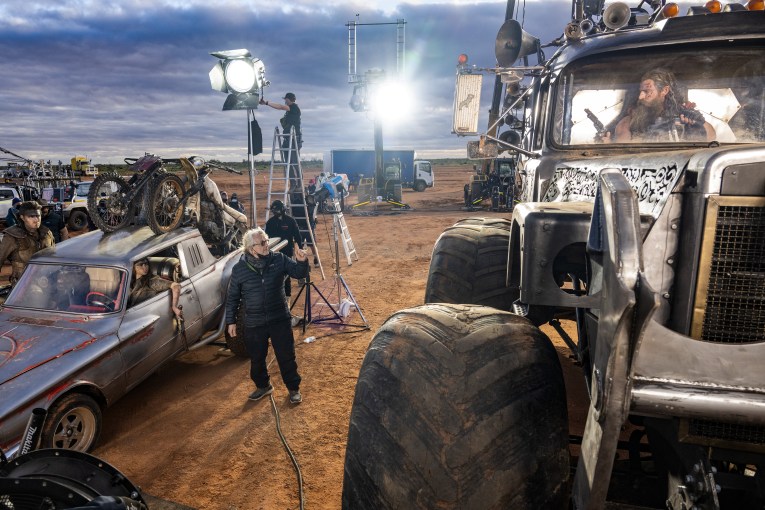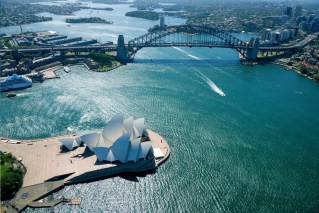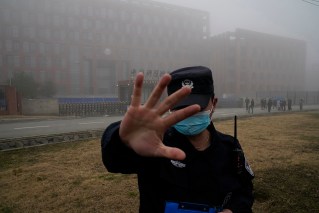Turkey and Syria’s earthquakes: What happened, where’s next, and should Aussies be worried?

Thousands of people have died in Turkey and Syria following a series of strong earthquakes, which experts said were a long time coming.
Apartment buildings were reduced to rubble and larger industrial structures, including hospitals, were significantly damaged after a magnitude 7.8 earthquake hit in the early hours of Monday morning (local time), and was soon followed by a 7.7 quake.
As of Tuesday afternoon, the number of confirmed dead in Turkey is 2921, while the latest toll from Syria is 1444, leaving the total death toll standing at 4365.
The toll is expected to rise, as rescuers work desperately to find survivors trapped under wreckage in freezing conditions.
Tweet from @CdeJAMAL
Australia has joined other countries and international organisations in announcing aid for the disaster-hit regions, with $7 million bookmarked for Turkey and $3 million for Syria through Red Cross, Red Crescent and UNICEF.
The earthquakes came as a terrifying shock for people across southern Turkey and northern Syria, most of whom were asleep when the first quake hit.
It is believed to be the strongest earthquake to hit the country since a 7.6 magnitude quake devastated north-western Turkey in 1999.
It’s not surprising such a large earthquake occurred in the region, which is a “well-known major area of earthquake hazard”, said University of Melbourne professor in active tectonics and geomorphology, Mark Quigley.
“In terms of the intensity of the shaking and so on, it’s equivalent to a one in 300, to one in 500-year earthquake in this area,” Dr Quigley said.
“This is an area of really, really high earthquake hazard, so there’s nothing surprising about this particular event at all.”
Why was the earthquake so devastating?
The regions across Turkey and Syria where Monday’s quakes occurred fall on the East Anatolian Fault zone, where three tectonic plates move and rub against each other.
But this week’s event caused significantly more damage and loss of life than usually seen in the area’s seismic events.
Seismology Research Centre chief scientist Adam Pascale said Monday’s quake was particularly shallow, occurring at a depth of 18 kilometres, with several aftershocks about 10 kilometres deep.
“Most large earthquakes like this might have been a bit further down, so you’ve got a little bit more distance between the energy release and the surface,” he said.
Mr Pascale said aftershocks strong enough to hamper rescue and recovery efforts could happen.
The quality of infrastructure may also take some blame for the climbing death toll, with thousands of buildings having collapsed as a result of the earthquake.
Tweet from @Reuters
Dr Quigley said while the shaking intensity caused by the quakes was quite severe, vulnerable infrastructure meant buildings were “falling like pancakes” with many buildings’ upper floors collapsing directly onto lower floors.
Poor construction is known to plague Turkey, previously bearing the brunt of the blame for deaths following the 2011 earthquake, and there are concerns rapid construction in Syria might have also left structures vulnerable.
Where will the next big earthquake be?
Researchers have no way of predicting when future earthquakes will occur, but they have a good idea of the areas most at risk of severe events.
“We do know that those large earthquakes do occur in particular areas where two tectonic plates are meeting, which is … like the San Andreas [Fault extending through California]”, Mr Pascale said.
The strongest event felt along the San Andreas Fault was a 7.9 magnitude earthquake in 1906.
Although the date of the next massive quake can’t be pinned down, research indicates a similar-level earthquake could occur about every 200 years – but there’s no guarantee it won’t be sooner.
In Japan, scientists have predicted an earthquake comparable to the 9.0 magnitude 2011 Tōhoku earthquake is likely to occur along the Nankai Trough (an ocean-floor trench that extends from central Japan to the southern island of Kyushu) within the next three decades.
“Anywhere where we have tectonic plate boundaries, there is an increased earthquake hazard,” Dr Quigley said.
“All through Indonesia, through New Zealand, South America … western coast of North America, Japan, Taiwan, the Philippines, all these places [have a] very well-established earthquake hazard.”
Could a big earthquake hit Australia?
Australia is lucky in its central position on the Australian tectonic plate, meaning severe earthquakes are rare.
The country experiences a magnitude 6 earthquake or stronger about every 10 years. The biggest on record was the 1988 magnitude 6.6 Tennant Creek earthquake, which caused 13 fatalities.
Mr Pascale said because of its position on the tectonic plate, Australia won’t see earthquakes with magnitudes of 8 or 9, with the country’s maximum magnitude danger being about 7.5 – which Australia hasn’t seen in recorded history.
If an earthquake with a magnitude about 7 did occur, much of the country’s infrastructure might not be up to scratch – as evidenced when a 5.8 magnitude earthquake hit in 2021.

The 2021 earthquake was felt across Australia’s south-east. Photo: TND
Dr Quigley said while it made sense that Australian buildings weren’t required to be built to the same seismic building codes as in more tectonically-active regions because the local hazard was lower, there was plenty of vulnerable building stock that was not up to code.
“If you’re in Melbourne, you only think about places like Smith Street and Brunswick Street and so on, where you’ve got all these beautiful old buildings but you know that they are very vulnerable to earthquake shaking,” he said.
“If there are people out on the street, for example, and a major earthquake occurred, there will be loss of life.”








